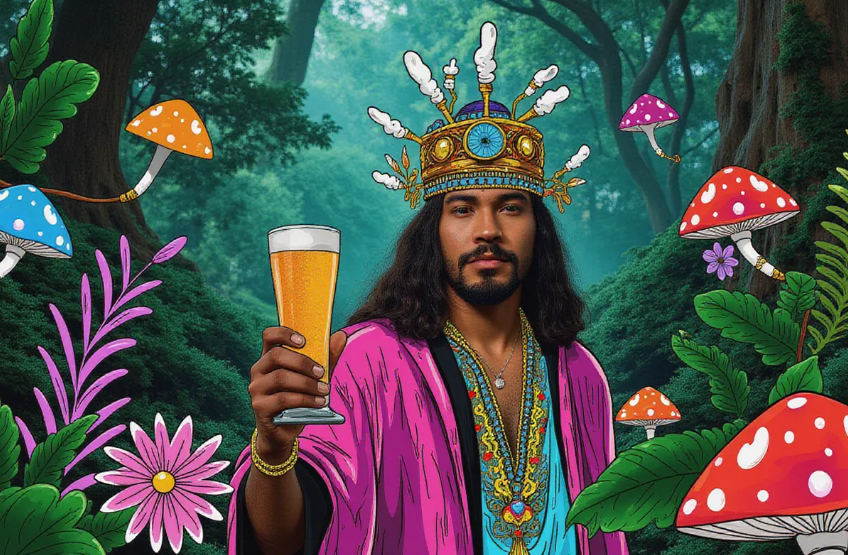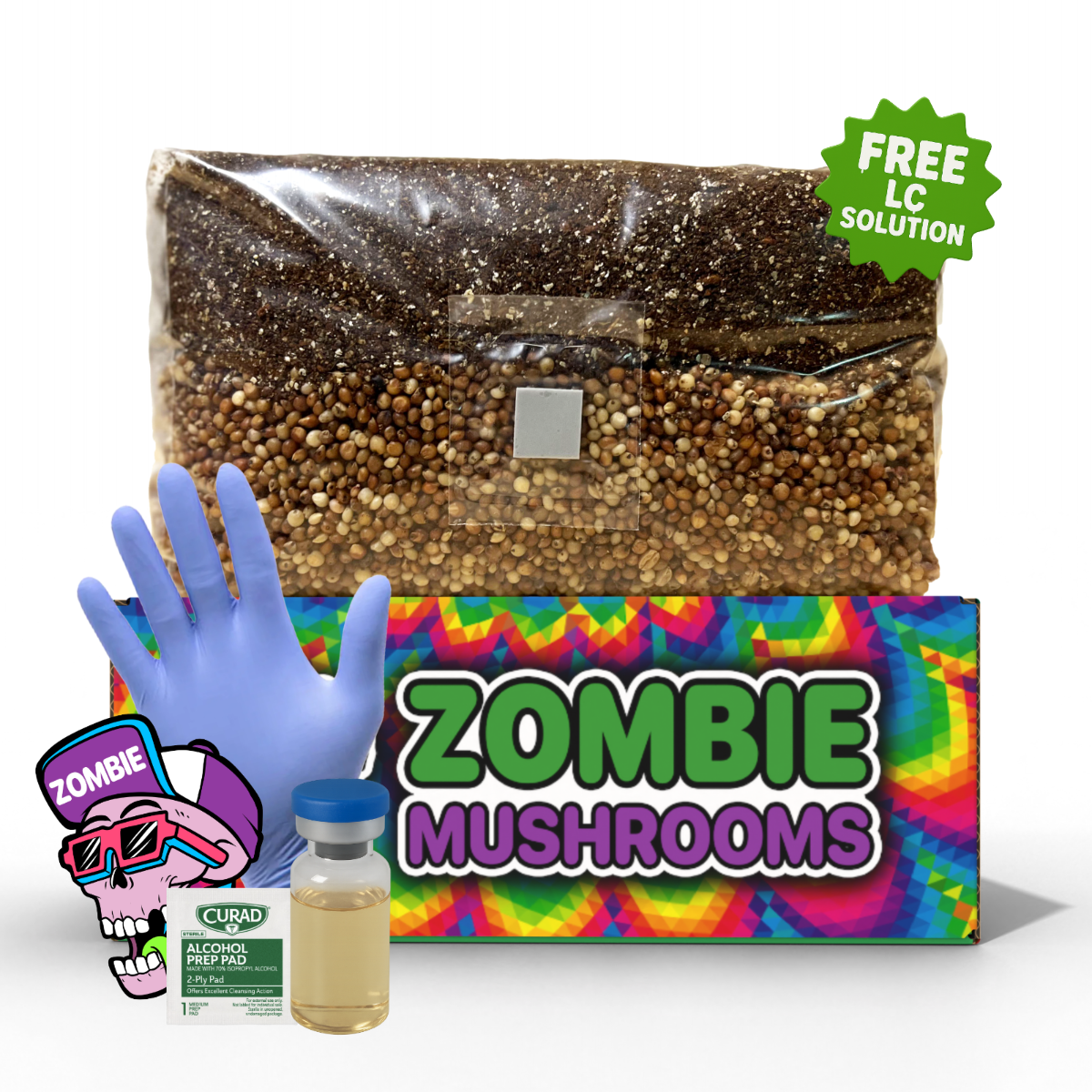⬇️ Prefer to listen instead? ⬇️

- Archaeologists found vilca seeds at a Wari brewing place. This suggests they used psychoactive beer for diplomacy.
- Vilca has bufotenine, a hallucinogen like DMT. People in South America have traditionally used it in rituals.
- The Wari changed ceremonial psychedelics into social tools. They used them to build political alliances.
- Psychedelic beer might have been a way for the Wari Empire to expand without violence.
- Shared altered states probably made groups stronger and improved obligations between people.
The Wari Empire was strong in ancient Peru from 500 to 1000 CE. They were in the Andes and may have used psychedelics to charm and bond with people nearby. Recent finds show that Wari leaders brewed a psychoactive beer. They made it from corn and vilca seeds. This beer was a key tool for diplomacy. It helped with social unity and growing their region. This interesting mix of political skill and intoxicating ritual gives us deep ideas about how old groups might have used mind-altering substances to shape their society, and for modern enthusiasts, mushroom monotub kits offer a legal way to explore cultivation at home.

Who Were the Wari?
Before the Inca became powerful in the Andes, the Wari Empire (also called "Huari") made one of the first big political systems in South America. They ruled from their highland capital near what is now Ayacucho. The Wari controlled large areas of what is now central and southern Peru. At their strongest point, the Wari moved goods, people, and ideas across long distances. They used a smart system of roads and centers. This system came before the well-known Inca road system.
The Wari were good at city planning, farming, and water use. They made terraces and canals to grow crops high up. They created new building styles. They built centers like Pikillaqta and Conchopata. These had set layouts and standard pottery. These are clear signs of a central government style.
As an early Andean superpower, the Wari didn't just fight wars or rule by force. Instead, they seemed to use other ways to have influence. They used strategic feasting, gift-giving, and maybe psychoactive diplomacy. These actions helped them bring in nearby groups without always fighting. They made alliances across different areas, from the coast to the Amazon borderlands.

Psychedelic Feasts at Quilcapampa
Recent archaeology at Quilcapampa shows strong proof of the Wari's new use of altered states for networking and ruling. Quilcapampa is in southern Peru’s Sihuas Valley. Archaeologists Matthew Biwer and Justin Jennings led digs there. They found a riverside feasting place. It was a center for community events, maybe led by Wari leaders.
One of the most interesting finds was 16 vilca (Anadenanthera colubrina) seeds. These were near big ceramic chicha pots. This suggests the seeds fell in by accident during brewing. Or, they were put in the drink on purpose. Chicha is a corn beer common in the Andes. It was usually a little alcoholic and used in groups. But, with vilca added, it became a strong hallucinogenic.
The place where they found this was amazing. The vilca seeds were found in what looked like a public hall. There were ceramic serving dishes and brewing tools there. These had been ritually broken. Breaking things was common in Andean rituals. It meant the end of an event or an offering.
Usually, people used vilca to make a snuff to inhale. It was for one person or shamans. But the Wari seemed to put the seeds in drinks. This made vilca less strong. It also made it possible to drink in group events. This created emotional and social experiences for groups. Today, we might call it a shared altered state.
What Made This Beer Psychedelic?
To know how the Wari changed a basic drink into something special, we need to look at vilca closely.
Vilca seeds have psychoactive parts like bufotenine, DMT (dimethyltryptamine), and related tryptamines. Bufotenine is the strongest and most psychoactive part. It is not as strong as DMT. But bufotenine causes strong visual hallucinations, time changes, and feelings of cosmic unity when you use a lot.
When you inhale vilca as snuff, it works fast. It can be rough or confusing. But in a drink, like beer, the effects may have come on slower over hours. Mixed with chicha, a normal ritual drink, it made a beverage that could lower worries, cause visions, and build emotional links between guests and hosts.
Vilca trees did not grow near Quilcapampa. So, these seeds had to come from lowland areas or eastern Andean slopes. This means they were rare and likely saved for important gatherings. Having special access to these things was a strong way to control society. It fit with Andean ideas of give-and-take and duty.

Vilca: A Hallucinogenic Ancestral Tool
People have used Anadenanthera colubrina for thousands of years in South American shamanic ways. Across cultures in the southern and central Andes, vilca or "yopo" (in parts of the Amazon) was used for spiritual readings, healing, and talking to ancestors or gods.
Old vilca rituals usually used seeds ground into a powder. This powder was mixed with lime (calcium hydroxide). People inhaled it through long tubes or bone spoons. The lime helped the alkaloids work better. It raised pH and helped absorption through nose tissues.
Archaeologists have found vilca items in areas of cultures before the Wari. They found carved snuff trays, inhalation tubes, and fancy ceramic snuffing kits. But, at Quilcapampa, these inhalation tools are missing. This suggests a new or changed way of using vilca.
By putting vilca in beer, the Wari made a special experience that was both therapeutic and social. It softened a usually strong ritual substance. It made it easier to share and communal. This new idea may be one of the first known times a psychedelic was given socially in a fermented drink.

Using Psychedelics as Political Power
The Wari seemed to pair altered states with fancy hospitality on purpose. It was a form of political show. Like state banquets or cultural diplomacy today, feasts at places like Quilcapampa likely showed wealth, giving, generosity—and maybe something special.
Serving psychedelic beer would have made these events memorable, emotional, and spiritual. They may have used this to get political loyalty, make alliances between groups, or bring in resistant people. Instead of force, the Wari changed minds—and relationships.
Archaeologist Matthew Biwer said, “Guests at a feast may owe something to a host who gave them food and drink… There is real power in these situations” (Gizmodo, 2024). In Andean political systems based on ayni (giving back), this kind of debt could mean support for work, military, or trade.
Having vilca also had symbolic meaning. It was not local. So, being able to get and serve it showed wide reach in trade and land control. This made the host seem more important. It showed their power in ways that were both real and spiritual.

Psychedelics and Community Building
Modern science has shown what old cultures knew. Shared psychedelic experiences can cause big social change. Studies say psychedelics like psilocybin and MDMA can grow empathy, lessen ego, and cause feelings of unity and connection.
In native and modern groups, plant medicine rituals are valued for making emotional closeness and helping heal trauma. The Wari’s vilca beer feasts may have been as much about group bonding as spiritual show.
As brain science gets better, we see how serotonin, oxytocin, and dopamine work together with psychedelics to grow trust and connection. These effects would have been very strong at a feast. People there already felt good from food, music, and being together.

Ritual or Strategy? Probably Both
Some might ask if the Wari’s psychedelic actions were spiritual rituals or planned manipulation. The likely answer: both.
In ancient Peru, religion and ruling were not separate. Leaders got their power from sacred ancestors and divine approval. Offering psychoactive experiences had both religious and political roles. It grew awe for state power while tying people emotionally into a system of duty and respect.
The lack of normal vilca snuff tools at the site suggests the Wari changed vilca use to be more open and less intense for one person. This was good for making group unity under state goals.
It's easy to picture a Wari meeting like a council, but with psychedelic sacrament. Reflection, alliance-making, and spiritual insight came together in an altered state.

Echoes in Today’s Psychedelic Renaissance
Today’s "psychedelic renaissance" is mostly on medical and therapy uses of classic entheogens like psilocybin, MDMA, and ayahuasca. But old examples like Wari psychedelic beer show us these compounds also have social, group, and political sides.
Group mushroom events, ayahuasca retreats, and MDMA-assisted group therapy repeat themes from Quilcapampa. Shared altered states grow connection and group insight.
As laws change, so does the chance for psychedelics to shape group identity, fix conflict, and improve civic links—not just heal trauma in therapy.

Lessons for Today’s Mycologists and Psychedelic Enthusiasts
Knowing how groups like the Wari used psychedelics can make modern psychedelic ways better. It adds wisdom and respect for culture.
- Set and setting matter: The setting of cooperation and celebration shaped how people felt the trip and what it meant.
- Access equals influence: Those who could give the psychedelic experience gained status and soft power.
- Substances reflect intention: Psychedelics are tools shaped by what people want to do, whether for healing, bonding, or politics.
Modern growers—whether growing psilocybin mushrooms, cacti, or doing legal ketamine sessions—should see their work as part of a long human story. It is where chemistry meets community, and purpose guides experience.

Could Psychedelics Be a Diplomatic Tool Again?
If loneliness, split views, and deep distrust are the problems of today’s world, then psychedelics might have diplomatic use again.
Imagine state leaders, teachers, or activists sharing sacred space in set ceremonial settings—like the Wari feast. This sounds extreme, but it fits with world trends in health, fixing conflicts, and building community on purpose.
Like the Wari used vilca in beer to make alliances, we might find again how changed consciousness can heal broken societies.
Psychedelics: Shaping the Past and the Present
The story of psychedelic beer in the Wari Empire shows a key truth. Psychoactive plants and fungi have not just changed minds, but empires. These substances are not strange. They have helped create strong group experiences that shaped societies—spiritually, socially, and politically.
Today, in mushroom circles, psychedelic groups, or research centers, we do like the old people. We change our minds—and change world views.
When you brew your own chicha, use mushrooms, or hold sacred ceremony, think: You are following an old way that has always known that connection is the strongest help of all.
Citations
- Jennings, J., Biwer, M., Rocca, M. C., & Sayre, M. P. (2022). Brewing Beer, Tripping Together: Feasting and the Spread of Wari Influence in Ancient Peru. Antiquity.
- New Atlas. (2024). Ancient Civilization May Have Used Psychedelic Beer to Forge Alliances. https://newatlas.com/science/psychedelic-beer-history-wari-america-drugs



